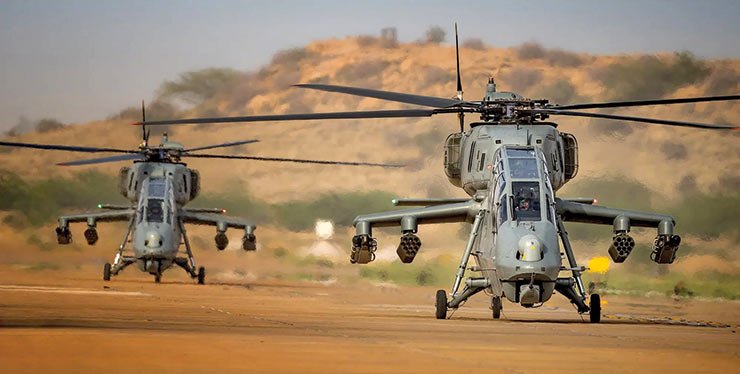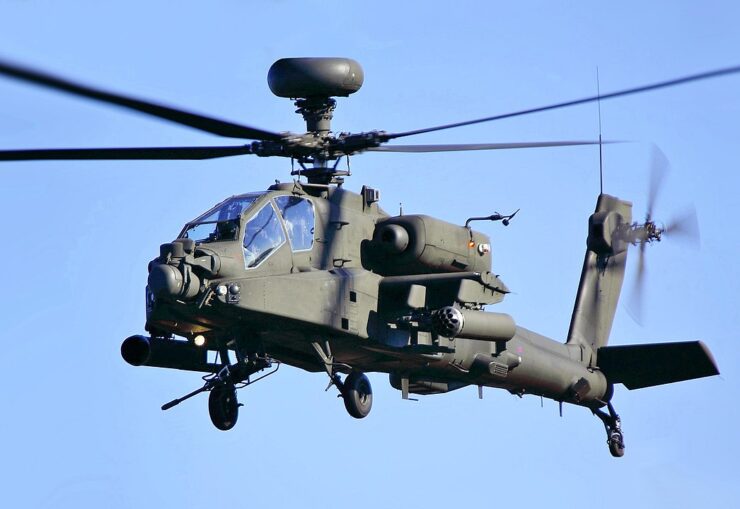The Defence Acquisition Council (DAC), under the leadership of Defence Minister Rajnath Singh, took a significant stride on November 30, 2023, approving the acquisition of defence equipment worth Rs 2.23 lakh crore from Indian companies. This momentous decision included the procurement of an additional batch of 97 Tejas Light Combat Helicopter (LCH), Su-30 fighter aircraft, and a substantial fleet of around 150 Prachand light combat helicopters. Last year, in March, the Cabinet Committee on Security greenlit the induction of 15 Prachand helicopters, allocating ten for the Indian Air Force and 15 for the Army. This acquisition serves to bolster the existing fleet, emphasising the strategic importance of ‘Prachand.’ The induction ceremony, presided over by Defence Minister Rajnath Singh in Jodhpur, marks a crucial moment aimed at enhancing the collective combat proficiency of the Armed Forces while fortifying indigenous defence infrastructure.
In adherence to the decision made by the Defence Ministry, an impressive 98 percent of the total procurement, amounting to a substantial sum of ₹2.23 lakh crore, is earmarked to be sourced from domestic industries. This strategic move is poised to propel the Indian defence industry forward, aligning with the overarching goal of achieving ‘Atmanirbharta’ or self-reliance in the defence sector.
A Step towards Indigenisation
The Prachand LCH stands as a testament to the capabilities of Defence Research and Development Organisation (DRDO) in providing operational systems that rival international technological advancements. It is imperative that military leadership continues to exert pressure on the Ministry of Defence (MoD) and the DRDO to pursue subsequent advancements in long-range assault missiles, sensory apparatus, such as radar, and networking capabilities associated with the Prachand system.
It is imperative that military leadership continues to exert pressure on the Ministry of Defence (MoD) and the DRDO to pursue subsequent advancements in long-range assault missiles, sensory apparatus, such as radar, and networking capabilities associated with the Prachand system
Appropriately named “Prachanda” (fierce), the LCH showcases incredible versatility and formidable strength. Its induction during the nation’s freedom celebration, Azadi ka Amrit Mahotsav, signifies the Indian Air Force’s aspiration to establish itself as a dominant force on the international stage.
The development of the LCH represents the culmination of two decades of extensive research and development, initiated in response to the urgent need for attack helicopters following the 1999 Kargil War.
The LCH Capabilities
The LCH is a versatile combat helicopter with formidable capabilities in ground attack and aerial warfare scenarios. The Prachand attack helicopter boasts contemporary stealth attributes, resilient armour shielding, and powerful nocturnal assault capabilities. Equipped with state-of-the-art navigation systems, potent close combat armaments, and sophisticated air-to-air missile capabilities, the LCH is a force to be reckoned with.
Its ability to navigate and operate effectively in elevated terrains provides it with the capacity to execute meticulous and accurate assaults on targets situated at considerable heights.
The presence of the LCH serves as a strong deterrent against potential aggressors, demonstrating India’s unwavering commitment to safeguarding its cherished sovereignty. The resounding success of the LCH significantly boosts the morale of the Indian armed forces. The deployment of the LCH strengthens the nation’s stature as a key player in the realm of defence technology and capabilities.
Meticulously crafted and produced by Hindustan Aeronautics Limited (HAL), the LCH stands as a groundbreaking milestone in the realm of indigenous Multi-Role Combat Helicopters, signifying a paradigm shift in India’s relentless pursuit of defence self-sufficiency.

The Chief of Air Staff, Air Chief Marshal V R Chaudhary, eloquently underscored the LCH’s paramount significance in enhancing the combat capability of the IAF. Emphasising the distinctive offensive potential of the LCH, he aptly aligned it with the best attack helicopters globally, marking it not just as a national achievement but as a benchmark on the international stage.
Exceptional Agility and Stealth Capabilities
The LCH’s remarkable agility and exceptional manoeuvrability, beyond being mere attributes, represent a formidable challenge for adversary aircraft, ensuring unparalleled effectiveness in engagement scenarios. Going further, its cutting-edge stealth capabilities bolster its survivability vis-a-vis radar, significantly enhancing its operational effectiveness in various combat theatres.
The long-range capabilities of the LCH extend its operational reach into the depths of adversary domains, thereby transforming the nature of military engagements and allowing for the precision engagement of targets previously considered beyond its operational scope.
The LCH’s versatile deployment capabilities, spanning maritime vessels, aerial helicopters, and terrestrial bases, present India with an unparalleled strategic advantage. This adaptability empowers military strategists with diverse options for deployment, ensuring a dynamic response to evolving threats
The LCH’s versatile deployment capabilities, spanning maritime vessels, aerial helicopters, and terrestrial bases, present India with an unparalleled strategic advantage. This adaptability empowers military strategists with diverse options for deployment, ensuring a dynamic response to evolving threats. The compact dimensions of the LCH not only facilitate ease of transportation but also provide rapid deployment capabilities, thereby conferring a pivotal advantage during periods of conflict. Importantly, the LCH’s commendably low operational expenditures further underscore its strategic value, making it a judicious and economically viable augmentation to the Indian military.
Exclusivity in Comparison to Apache
Drawing a comparative analysis with the Apache involves a nuanced consideration of contextual factors. While both helicopters are formidable in their own right, the LCH’s exceptional high-altitude performance positions it as a specialised asset, engineered to excel in the demanding operational conditions prevalent in the Himalayas. Its capacity to navigate through narrow valleys, traverse challenging mountainous terrain, and operate in high-altitude regions provides efficient support to ground operations, making it an indispensable asset for the Indian Army.

Equipped with a turret-mounted gun, rockets, air-to-air missiles, and air-to-ground missiles, the LCH is a powerhouse that significantly bolsters the military capability of the Indian Army. Its smaller dimensions and reduced weight, when compared to the Apache, confer enhanced agility, particularly in confined areas and rugged topographies. The added advantage of indigenous development positions the LCH as a more economically viable solution in terms of both acquisition and maintenance costs, exemplifying a prudent investment in defence capabilities.
Key Takeaways
The advent of the LCH symbolises not just the acquisition of a military asset but marks notable progress within India’s aerospace sector. It represents a significant stride towards self-sufficiency, fostering the transfer of technological knowledge and expertise. This indigenous achievement reflects India’s commitment to innovation, research, and development, strengthening its position as a technological force in the global defence landscape.
The LCH is not merely a helicopter; it is a game-changer for India’s military capabilities. Its acquisition holds immense potential in augmenting India’s aerial warfare prowess, amplifying operational versatility, fostering growth in the defence sector, and eliciting a favourable psychological response. The LCH stands as a formidable emblem of India’s rapidly evolving military capabilities and its unwavering aspirations to assume a prominent and influential role in the global defence arena.
-The writer is a Senior Fellow at the Centre for Air Power Studies. Prior to this he was Group Captain in the IAF. He served the IAF for more than three decades in various capacities. He was Director Air Staff Inspections and retired as Director, Joint Control and Analysis Centre. The views expressed are personal and do not necessarily reflect the views of Raksha Anirveda
-The writer is a Senior Fellow at the Centre for Air Power Studies. Prior to this he was Group Captain in the IAF. He served the IAF for more than three decades in various capacities. He was Director Air Staff Inspections and retired as Director, Joint Control and Analysis Centre. The views expressed are personal and do not necessarily reflect the views of Raksha Anirveda














